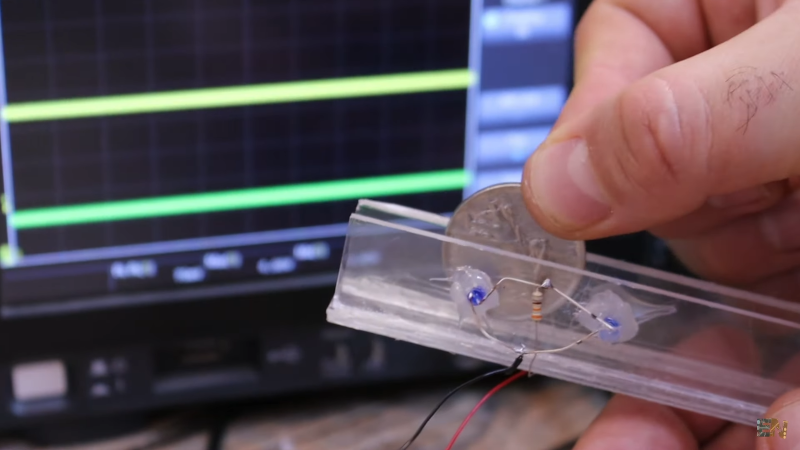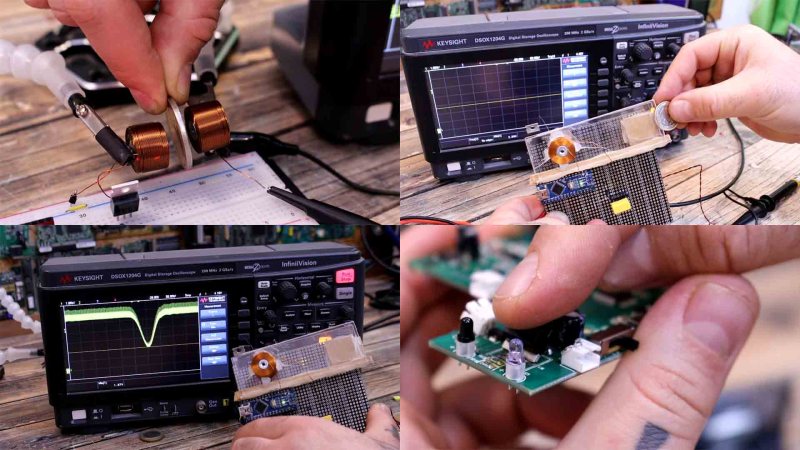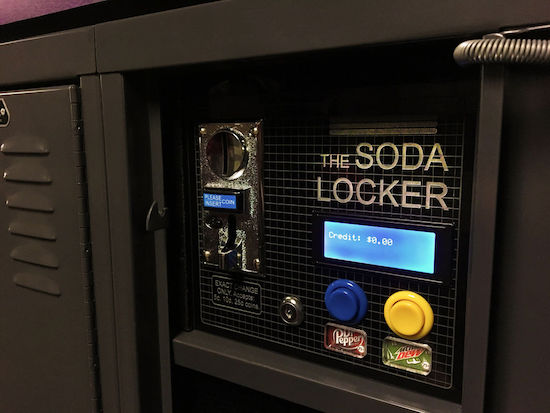11

Coin-operated machines have a longer history than you might think. Ancient temples used them to dispense, for example, holy water to the faithful in return for their coins. Old payphones rang a bell when you inserted a coin so the operator knew you paid. Old pinball machines had a wire to catch things with holes in the middle so you couldn’t play with washers. But like everything else, coin acceptors have advanced quite a bit. [Electronoobs] shows a unit that can accept coins from different countries and it is surprisingly complex inside. He used what he learned from the teardown to build his own Arduino-based version.
For scale, there is the obligatory banana. Inside the box there are several induction coils and some photo electronics. In particular, there are two optical sensors that watch the coin roll down a ramp. This produces two pulses. The width of the pulse indicates the diameter of the coin, and the time between the pulses tells its speed.
 So what are the two coils for? They form a transformer, and the coin moving between the coils changes the coupling in a way that depends on the material. By knowing the diameter, the transit speed of the coin, and the material, you can identify the coin. A little solenoid-driven flap moves out of the way to store a recognized coin. If it doesn’t move out of the way, the coin goes out of the coin return slot.
So what are the two coils for? They form a transformer, and the coin moving between the coils changes the coupling in a way that depends on the material. By knowing the diameter, the transit speed of the coin, and the material, you can identify the coin. A little solenoid-driven flap moves out of the way to store a recognized coin. If it doesn’t move out of the way, the coin goes out of the coin return slot.
We wondered how the machine knows about local currency and what happens if the composition of a coin changes. The video shows how you teach the device about a coin by inserting a sample coin multiple times and letting the device measure. So even if you had some custom token, it should work.
The homebrew solution is pretty easy, especially the optical part. The coils are a bit more work since you need a big coil along with the associated driver and sense electronics. Then, of course, there is also the mechanics, which he did not build, since the commercial product was only $20.
We always enjoy teardowns, but this one was especially informative, and we enjoyed the reproduction of the operating principles. Hero was a Greek who lived a long time ago and would have really been interested in this teardown. We couldn’t help but think, too, of [Peter’s] coin-operated calculator.




